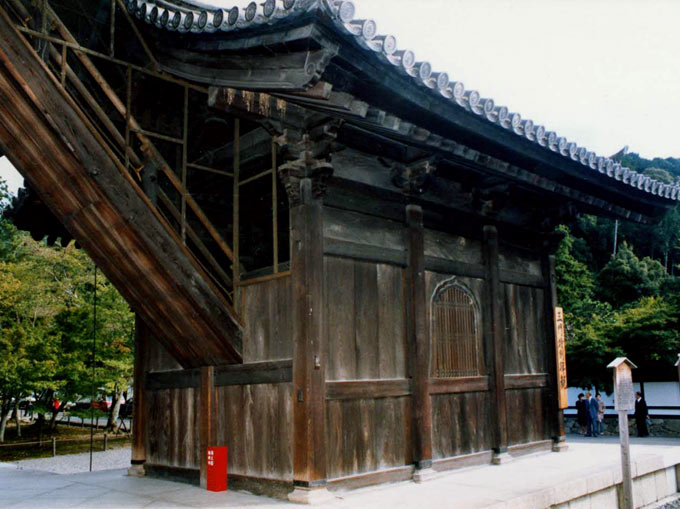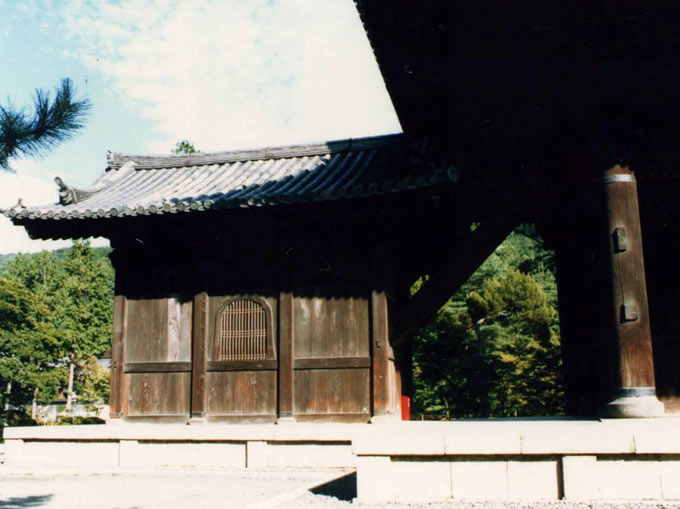|
||
 |
||


Nanzenji
Sanmon μTOε (Kyoto)
@
(C)2001 Japanese Architecture and Art Net Users System.@No reproduction or republication without written permission.
fΪΜeLXgEΚ^ECXgΘΗASΔΜRecΜ³f‘»E]ΪπΦΆά·B
|
||||||
| @ | ||||||
| sanrou@RL | ||||||
| KEY WORD :@architecture / buildings & structures | ||||||
| @ | ||||||
| Also kirou @L. Small, single-storied, detached buildings on temple grounds constructed on each side of a two-storied gate *nijuumon ρdε. Sanrou are most commonly found either side of the large main gates *sanmon Oε at Zen sect, zenshuu T@, temples. Generally enclosed, they are entrances to stairways leading to the second story of the gate. Most have extended roofs over the stairways, or the stairways are positioned so that the overhang of the gate's roof protects them. Usually sanrou have gable roofs *kirizuma-zukuri ΨΘ’. The earliest extant sanrou is part of the Toufukuji Sanmon Oε (1428) in Kyoto. The Sanrou at Toufukuji are 2~2 bays, and have gable roofs, covered with tile *hongawarabuki {’, matching the roof of the large 5~2-bay (25.88m~10.35m) gate. They are partially walled, from the ground level to less than half the height of the posts that support the roof. The stairs are protected not only by the roof of the sanrou but also by the deep overhang of the first story roof. Two examples of Sanmon with sanrou an be found at Manpukuji δέ (1678) in Kyoto, which has a 3~2-bay (17.68m~9.61m), Sanmon with a 2~2-bay sanrou and at Toukouji υ (1811) in Yamaguchi prefecture, which has a 3~2 bay (11.50 m~ 6.60m) sanrou. | ||||||
| @ | ||||||
 
Nanzenji
Sanmon μTOε (Kyoto) |
||||||
@ |
||||||
| REFERENCES: | ||||||
| @ | ||||||
| EXTERNAL LINKS: | ||||||
| @@ | ||||||
| NOTES: | ||||||
| @ | ||||||
(C)2001 Japanese Architecture and Art Net Users System.@No reproduction or republication without written permission. fΪΜeLXgEΚ^ECXgΘΗASΔΜRecΜ³f‘»E]ΪπΦΆά·B |
||||||
| @ |